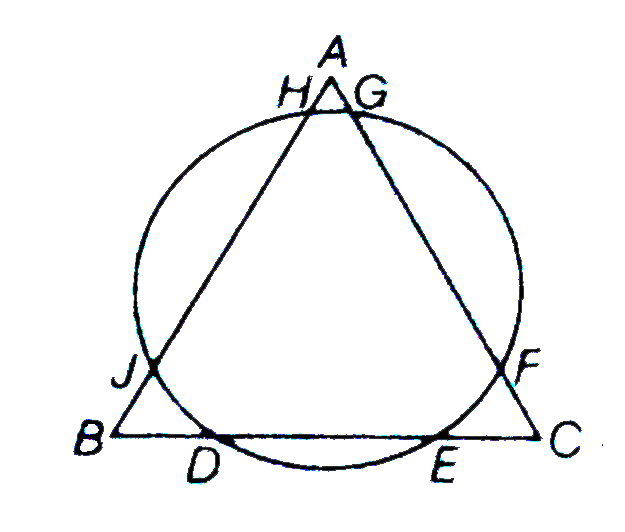In a ΔABC, angles A, B, C are in AP. If f(x)=limA→c√3−4sinAsinC|A−C|, then f'(x) is equal to ..........
1
2
3
4
The correct Answer is:A
Step by step video solution for In a Delta ABC, angles A, B, C are in AP. If f(x) = underset(A rarr c)(lim) (sqrt(3 - 4 sin A sin C))/(|A-C|), then f'(x) is equal to .......... by Maths experts to help you in doubts & scoring excellent marks in Class 12 exams.
Updated on:21/07/2023Topper's Solved these Questions
- PROPERTIES AND SOLUTION OF TRIANGLES BOOK - ARIHANT MATHS ENGLISHCHAPTER - PROPERTIES AND SOLUTION OF TRIANGLES EXERCISE - Exercise (More Than One Correct Option Type Questions)
23 Videos
- PROPERTIES AND SOLUTION OF TRIANGLES BOOK - ARIHANT MATHS ENGLISHCHAPTER - PROPERTIES AND SOLUTION OF TRIANGLES EXERCISE - Exercise (Statement I And Ii Type Questions)
11 Videos
- PROPERTIES AND SOLUTION OF TRIANGLES BOOK - ARIHANT MATHS ENGLISHCHAPTER - PROPERTIES AND SOLUTION OF TRIANGLES EXERCISE - PROPERTIES AND SOLUTIONS OF TRIANGLES EXERSISE 1: SINGLE OPTION CORRECT TYPE QUESTIONS
1 Video
- PRODUCT OF VECTORSBOOK - ARIHANT MATHS ENGLISHCHAPTER - PRODUCT OF VECTORSEXERCISE - Exercise (Questions Asked In Previous 13 Years Exam)
51 Videos
- SEQUENCES AND SERIESBOOK - ARIHANT MATHS ENGLISHCHAPTER - SEQUENCES AND SERIESEXERCISE - Exercise (Questions Asked In Previous 13 Years Exam)
38 Videos
Similar Questions
If area of ΔABC(Δ) and angle C are given and if c opposite to given angle is minimum, then
View SolutionIn a triangle ABC,a3+b3+c3=c2(a+b+c) (All symbol used have usual meaning in a triangle.) Statement-1: The value of ∠C=60∘. Statement-2: ΔABC must be equilateral.
View SolutionIn the adjoining figure, the circle meets the sides of an equilateral triangle at six points.

If AG=2,GF=13,FC=1andHJ=7, then DE equals to
View SolutionLet O be the origin and let PQR be an arbitrary triangle. The point S is such that ¯¯¯¯¯¯OP⋅¯¯¯¯¯¯OQ+¯¯¯¯¯¯OR⋅¯¯¯¯¯¯OS=¯¯¯¯¯¯OR⋅¯¯¯¯¯¯OP+¯¯¯¯¯¯OQ⋅¯¯¯¯¯¯OS=¯¯¯¯¯¯OQ⋅¯¯¯¯¯¯OR+¯¯¯¯¯¯OP⋅¯¯¯¯¯¯OS Then the triangle PQR has S as its
View SolutionLet a,b,c be in A.P. and |a|<1,|b|<1|c|<1.ifx=1+a+a2+....to ∞,y=1+b+b2+....to ∞and,z=1+c+c2+...to ∞, then x,y,z are in
View SolutionIf angle A,B,C of Delta ABC form an increasing AP,then sin B=
View SolutionIf angle A,B,C of Delta ABC form an increasing AP,then sin B=
View SolutionIn a triangle ABC, if sinAsin(B−C)=sinCsin(A−B), then prove that cotA,cotB,cotC are in A.P.
View SolutionIf ∫√1+sinxf(x)dx=23(1+sinx)32+c,thenf(x)equal cosx (b) sinx (c) tanx (d) 1
View SolutionIn Delta ABC if sin B cos C=(sqrt(3)-1)/(sqrt(3)) and sin C cos B=(1)/(sqrt(3)), then the triangle is
View SolutionIn Delta ABC if sin B cos C=(sqrt(3)-1)/(sqrt(3)) and sin C cos B=(1)/(sqrt(3)), then the triangle is
View SolutionIf in a Delta ABC,sin A,sin B,sin C are in AP then
View SolutionIf (lim)x→cf(x)−f(c)x−c exists finitely, write the value of (lim)x→cf(x) .
View SolutionThe angles A, B and C of a ΔABC are in AP. If b:c=√3:√2, then ∠A is equal to
View Solutionकिसी ΔABC में सिध्द कीजिये कि:
sin(B+C−A)+sin(C+A−B)+sin(A+B−C)=4sinAsinBsinC
View SolutionΔABC में सिद्ध कीजिए कि :
a3sin(B−C)+b3sin(C−A)+c3sin(A−B)=0
View Solution

